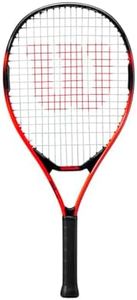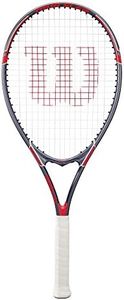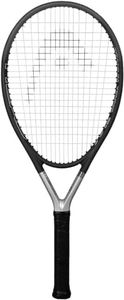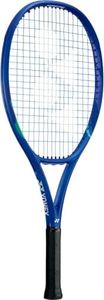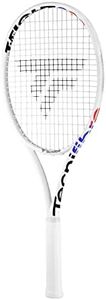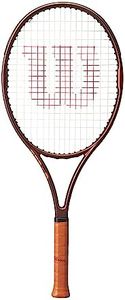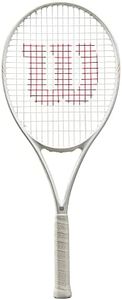We Use CookiesWe use cookies to enhance the security, performance,
functionality and for analytical and promotional activities. By continuing to browse this site you
are agreeing to our privacy policy
10 Best Tennis Racquets
From leading brands and best sellers available on the web.Buying Guide for the Best Tennis Racquets
Choosing the right tennis racquet can have a big impact on your playing experience, whether you’re a beginner or an experienced player. The racquet should complement your skill level, playing style, and physical strength. By understanding the main features of tennis racquets, you can better identify which one will help you enjoy the game and play at your best.Head SizeThe head size of a tennis racquet refers to the area of the stringed surface. This is important because a larger head size offers a bigger sweet spot, making it easier to hit the ball well and generate power, which is great for beginners or players needing more forgiveness. Smaller head sizes offer more control and are usually preferred by advanced players who can hit the ball accurately. Generally, head sizes below 100 square inches are for control, 100–105 for a balance, and above 105 for power and forgiveness. Think about your consistency and whether you prefer more power or more control when choosing head size.
WeightRacquet weight affects how the racquet feels and moves in your hand. Lighter racquets are easier to swing and maneuver, making them ideal for beginners or players who want quick reactions at the net, but they can transmit more shock to your arm. Heavier racquets provide more stability and power but require more strength and can tire your arm quicker. Lightweight is around 9–10 ounces, medium 10–11.5 ounces, and heavy is above 11.5 ounces. Pick the weight based on your strength, playing frequency, and preference for comfort or power.
BalanceBalance describes how the weight is distributed in the racquet. Head-heavy racquets feel heavier at the top and help generate power, which is useful for baseline players. Head-light racquets offer easier maneuverability and are great for net play and volleys. Even balance provides a mix of both. Beginners or players who like fast swings often prefer head-light or even-balanced racquets, while those seeking maximum power or who play mostly from the baseline might go for head-heavy racquets.
LengthStandard tennis racquets are about 27 inches long, but racquets can range from 27 to 29 inches. Longer racquets give you more reach and a bit more power on serves, but they can be harder to maneuver, especially for smaller players. If you value reach and have a two-handed backhand, a slightly longer racquet might suit you. For most players, standard length is comfortable and easy to handle.
String PatternThe string pattern is how tightly the strings are arranged on the racquet. An open pattern (fewer strings, like 16x19) gives more spin and power, while a closed pattern (more strings, like 18x20) offers more control and durability. If you like hitting with spin or want a lively feel, choose open. If you want precise shots and longer-lasting strings, choose a closed pattern. Your playing style and how quickly you tend to wear out strings can guide this choice.
Grip SizeGrip size is the thickness of the racquet handle. The right grip size helps prevent hand fatigue and injuries. Too small, and you’ll squeeze too much; too big, and you’ll lose control. Grip sizes are usually measured in inches or millimeters. You should be able to hold the handle with your fingers just touching your palm. If you’re between sizes, it’s safer to go smaller and add an overgrip if needed. Comfort and secure handling are the keys to this choice.
